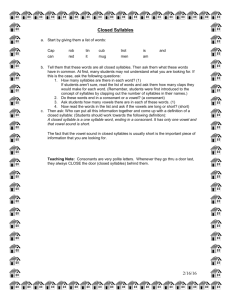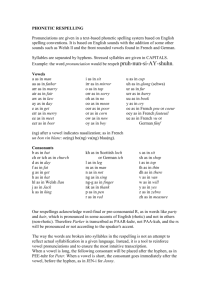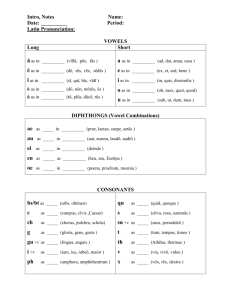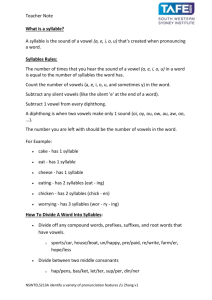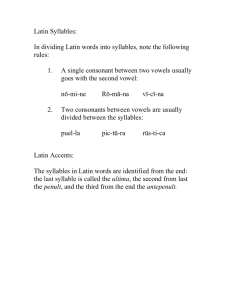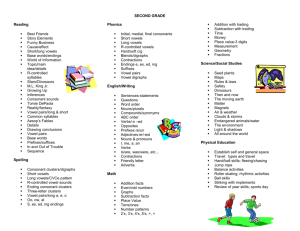Syllabication Fall 2013
advertisement
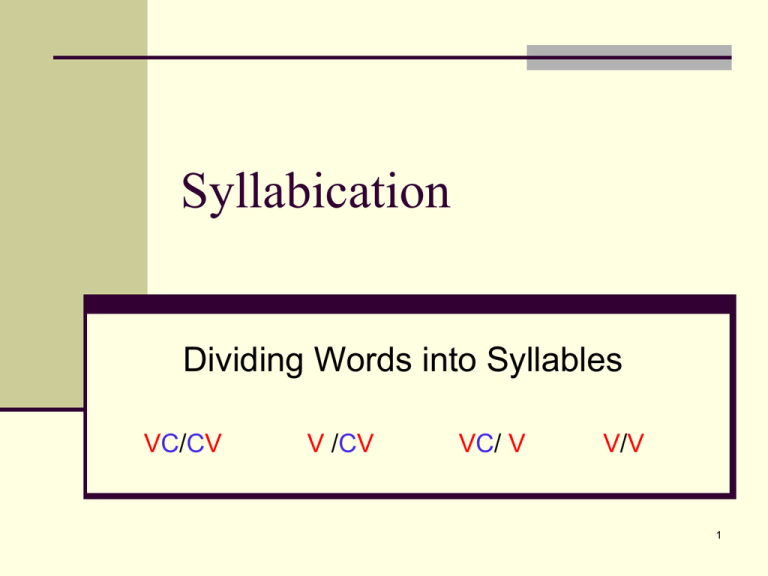
Syllabication Dividing Words into Syllables VC/CV V /CV VC/ V V/V 1 Benefits of Syllabication Students show improvement in: Spelling Decoding Pronunciation Fluency Vocabulary Development Visual Memory Auditory Memory 2 What is a Syllable? A syllable is a word or part of a word with a vowel sound. (a e i o u) Vowel sound may be spelled with more than one vowel 3 Syllables may be… Open /no/ /toe/ Open syllables usually have a long sound Closed /rat/ /cot/ Closed syllables usually have a short sound 4 1. Underline the vowels and mark the with a [ v ] to find the number of syllables. 1 “v”) 2 attic V V Count and number of vowels sounds 5 2. Swoop between the vowels sounds. Pull down the consonants between the vowels to find the pattern. 1 “v” 2 ) attic VC C V 6 3 Divide using the cut pattern. 1 2 “v” )a t t i c vc cv 7 4 1 2 Check the position of the vowels and mark them. ( ˘ ˉ ͠ Use the diacritical markings Ə) Is the syllable open or closed? Ask yourself: Is the vowel followed by a consonant? If yes, we have a closed syllable. Mark the vowel with a brev ( ̆ ). 1 2 “v” ) ăt t ĭ c VC CV 8 5 Blend the sounds and syllables together to unlock the word. Adjust if necessary. ( Schwa = Ə ) (V |C|V) 9 CUT PATTERNS FOR DIVIDING WORDS 10 VC/CV V/C/V VC/CCV V/V VC/CCCV VCC/CCV (compound words) 11 Try on your own! fabric border pilot exit include instruct flighty neon article background 12 VCCV VC/CV fab/ric bor/der 13 VCV V/CV OR VC/V pi/lot fligh/ty ex/it ar/ti/cle 14 VCCCV VC/CCV in/clude (consonant blend) 15 VCCCCV VC/CCCV VCC/CCV in/struct back/ground (consonant cluster) (compound word) 16 VV V/V ne/on 17

